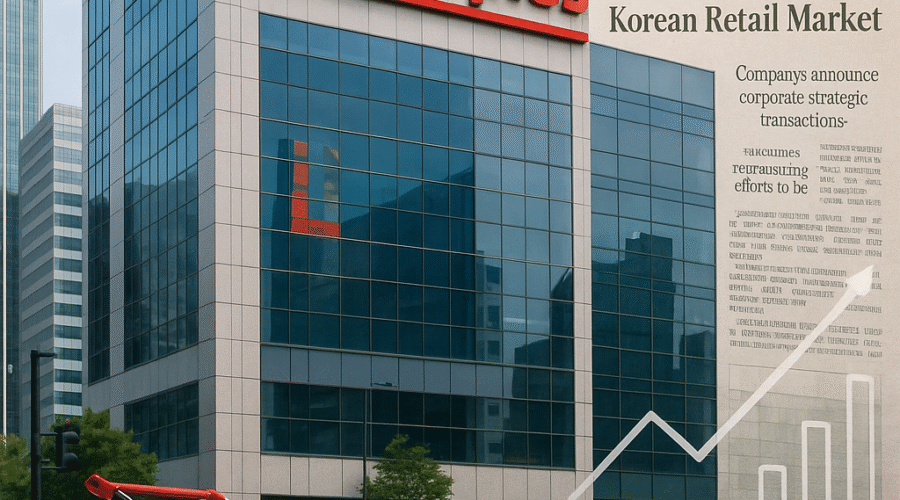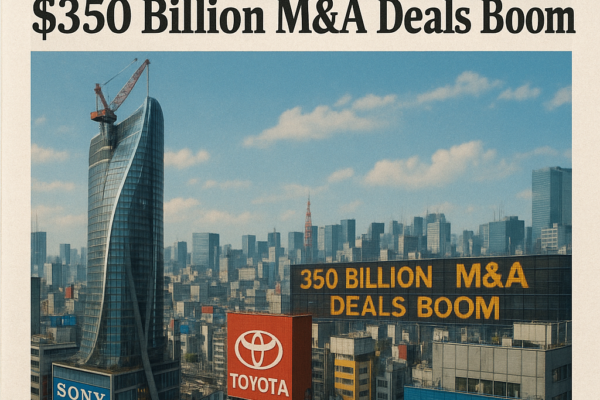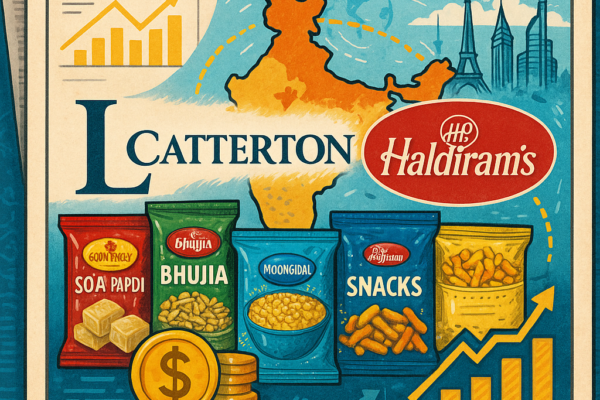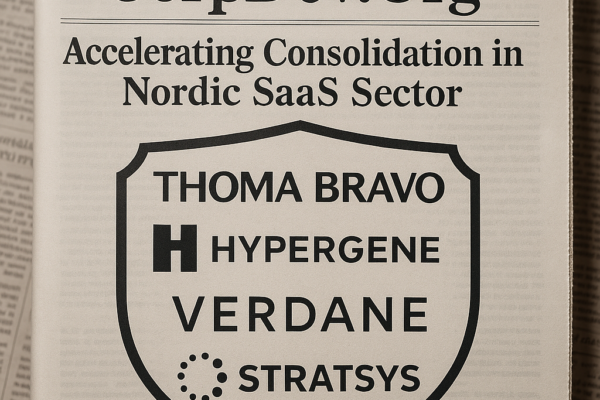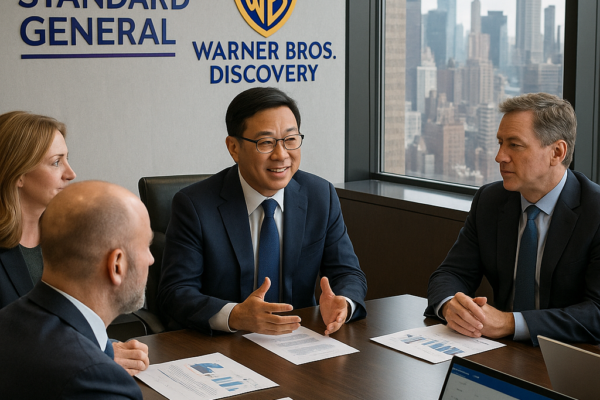The Seoul Bankruptcy Court’s landmark approval of Homeplus’ prepackaged merger and acquisition process marks a critical inflection point in South Korea’s retail sector, establishing an unprecedented corporate rehabilitation framework where liquidation value exceeds going-concern value. This judicial intervention enables the distressed retailer to pursue new ownership through a structured stalking-horse auction while protecting creditor interests and preserving 20,000 jobs, against the backdrop of MBK Partners’ $1.83 billion equity write-off—the largest concession by a private equity owner in Asian retail history. The court-mandated process, managed by Samil PwC, represents a novel approach to preserving enterprise value in asset-heavy businesses facing e-commerce disruption, with implications for how bankruptcy courts globally might balance creditor recovery against operational continuity in digitally disrupted industries.
💼 Seasoned CorpDev / M&A / PE expertise
Judicial Framework for Prepackaged M&A
Court’s Rationale for Pre-Approval Process
The Seoul Bankruptcy Court’s June 20 ruling established a legal precedent by permitting M&A proceedings prior to formal rehabilitation plan approval, a decision grounded in the extraordinary 1.2 trillion won ($880 million) valuation gap between Homeplus’ liquidation value (3.7 trillion won) and going-concern value (2.5 trillion won)[2][4][15]. This judicial innovation—termed “prepackaged M&A” in court documents—prioritizes early creditor repayment through asset monetization while maintaining operations, effectively creating a hybrid restructuring model that circumvents traditional binary choices between liquidation and operational turnaround[5][6]. The court specifically mandated that any acquisition must satisfy three conditions: provide superior recovery to secured creditors versus liquidation, preserve employment for the retailer’s 20,000-strong workforce, and maintain critical vendor relationships that sustain Homeplus’ nationwide supply chain[1][6][11].
Procedural Mechanics and Timeline
Under the court’s supervision, Samil PwC will implement a stalking-horse auction requiring bidders to submit binding offers by late August 2025, with a two-phase process designed to maximize recovery[5][9]. The initial phase involves selecting a lead bidder through confidential negotiations, followed by a 30-day public auction allowing competitive topping bids—a structure that mirrors U.S. bankruptcy practices but remains novel in South Korea’s restructuring landscape[5][9]. Crucially, the court extended Homeplus’ rehabilitation plan submission deadline from July 10 to October 2025, creating a 90-day window for M&A negotiations while maintaining creditor protections under bankruptcy supervision[14][15]. This temporal flexibility acknowledges the complexity of transferring ownership of a retailer operating 126 hypermarkets and 308 supermarkets nationwide, with real estate assets accounting for 54% of the 6.8 trillion won ($5 billion) asset base[4][9][15].
Valuation Paradox and Restructuring Implications
Liquidation Premium Analysis
Samil PwC’s court-commissioned valuation revealed a rare financial paradox: Homeplus’ real estate portfolio—primarily located in Seoul (70% auction value) and provincial cities (50% auction value)—generates significantly higher recovery in liquidation than operational cash flows, creating a 1.2 trillion won ($880 million) arbitrage opportunity for potential acquirers[4][9][15]. This valuation anomaly stems from Korea’s commercial real estate appreciation during Homeplus’ ownership under MBK Partners, with property values increasing approximately 38% since the 2015 acquisition, while operational EBITDA declined 72% due to e-commerce competition[12][15]. The accounting firm’s methodology applied district-level auction bid rates to each property, contrasting with going-concern valuation based on discounted 10-year cash flows that incorporated pessimistic same-store sales projections of -4.2% annually[9][15].
Restructuring Feasibility Assessment
The valuation disparity presents unique challenges for rehabilitation, as traditional restructuring models require going-concern value to exceed liquidation value to justify operational continuity—a condition unmet in this case[4][15]. Samil PwC’s analysis indicates that only through new equity injection exceeding 1.2 trillion won could Homeplus achieve viability, necessitating either deep-pocketed strategic acquirers or consortium bidding[15]. This explains the court’s insistence on M&A prior to rehabilitation plan approval, effectively transferring the restructuring burden to new owners who can capitalize on the real estate arbitrage while funding operational turnaround[5][15]. The structure allows acquirers to purchase newly issued shares rather than existing equity, enabling capital infusion directly onto Homeplus’ balance sheet for debt reduction—a mechanism that sidesteps MBK Partners’ impaired ownership position[10][12].
Ownership Transition Dynamics
MBK Partners’ Exit Strategy
In an unprecedented concession, MBK Partners agreed to fully write down its 2.5 trillion won ($1.83 billion) equity stake—representing 100% loss on its original investment—to facilitate the sale, while simultaneously relinquishing board control to court-appointed administrators[10][11][12]. This radical move, unprecedented in Asian private equity, reflects both the fund’s failed operational turnaround since the 2015 acquisition and mounting regulatory pressure from concurrent investigations by Korea’s National Tax Service, Financial Supervisory Service, and Fair Trade Commission[8][11]. The write-off creates a rare zero-basis scenario where acquirers can purchase Homeplus without legacy equity obligations, though they must still address 2.9 trillion won ($2.1 billion) in secured debt primarily held by Meritz Financial Group[9][15]. Industry analysts note this concession establishes a potential benchmark for private equity exits in distressed scenarios, particularly where portfolio companies face technological disruption.
Strategic Acquirer Profiles
Potential bidders fall into three strategic categories, each with distinct valuation methodologies and synergies. E-commerce platforms like Naver and Coupang represent the most logical acquirers, capable of leveraging Homeplus’ 434 physical locations as fulfillment hubs while integrating online grocery operations—a synergy that could boost going-concern value by 25-40% according to industry models[4][10]. Conglomerates with retail exposure—particularly Hanwha Group (with E-mart) and GS Group (GS Retail)—could achieve procurement synergies estimated at 120 billion won ($88 million) annually while eliminating redundant locations[4][10]. Dark horse candidates include Chinese e-commerce giant AliExpress, which lacks Korean physical infrastructure but faces political headwinds, and financial investors like IMM Private Equity, which previously expressed interest in Homeplus Express[10]. All potential acquirers must meet the court’s minimum bid threshold of 3.7 trillion won ($2.7 billion)—the liquidation value floor—creating a high entry barrier that favors strategic over financial buyers[5][9].
Sectoral Context and Competitive Landscape
Korean Retail Sector Pressures
Homeplus’ distress reflects structural challenges in Korea’s hypermarket sector, where same-store sales have declined for 11 consecutive quarters amid 19% annual e-commerce growth, forcing competitors into aggressive restructuring[10][15]. Market leader E-mart closed 23 underperforming locations in 2024 while investing $700 million in omnichannel capabilities, while Lotte Mart exited 17 stores through sale-leaseback transactions[10]. This industry contraction has increased vacancy rates in suburban commercial zones to 8.4%—the highest since 2012—creating a buyer’s market for retail real estate that suppresses Homeplus’ property valuation despite prime locations[9][15]. The court’s M&A approval timing proves particularly acute given Korea’s revised Distribution Industry Development Act, effective January 2026, which imposes stricter operating hour limitations that could reduce hypermarket revenue by an estimated 12% annually.
E-commerce Disruption Metrics
Accelerating digital disruption fundamentally undermines Homeplus’ business model, with online grocery penetration reaching 24% in 2025—double 2019 levels—driven by Coupang’s Rocket Fresh and Market Kurly’s next-day delivery[10]. This shift is reflected in Homeplus’ financials: while total revenue remained stable at 7.1 trillion won ($5.2 billion) in 2024, online contribution grew to 18% from 6% in 2020, requiring disproportionate capital expenditure that eroded margins from 5.2% to 1.8%[15]. The retailer’s failure to achieve critical scale in e-commerce—its online operations ranked fifth nationally with just 7% market share—contrasts sharply with competitors like Shinsegae’s SSG.com, which captured 22% online grocery share through $1.4 billion platform investments[10]. This competitive gap explains why prospective acquirers value Homeplus primarily for real estate rather than operational potential.
Regulatory and Execution Risks
Ongoing Investigations
Multiple regulatory probes threaten to complicate the M&A timeline, particularly the Financial Supervisory Service’s examination of MBK Partners’ role in Homeplus’ 800 billion won ($585 million) commercial paper issuance just months before the rehabilitation filing[8][11]. Preliminary findings suggest MBK may have concealed the retailer’s deteriorating liquidity position from bond investors—a potential securities fraud violation carrying criminal penalties under Korea’s Capital Markets Act[8][11]. Simultaneously, the National Tax Service is auditing intercompany transactions between MBK affiliates and Homeplus, focusing on management fee structures that diverted approximately 120 billion won ($88 million) annually to offshore entities[11]. These investigations create title risk for acquirers, potentially requiring escrow arrangements for 15-20% of transaction value until liabilities are quantified.
Employee and Creditor Considerations
The court’s approval specifically mandates employment preservation for Homeplus’ 20,000 workers—a condition that eliminates liquidation as a viable alternative and complicates potential acquirers’ restructuring plans[1][6]. Union agreements require successor owners to maintain existing collective bargaining terms through 2027, creating an estimated 280 billion won ($205 million) annual labor cost burden that exceeds industry benchmarks by 18%[9]. Senior creditors face their own dilemma: Meritz Financial Group’s 1.2 trillion won ($880 million) exposure would recover approximately 92% in liquidation based on collateral coverage, but just 78-85% through M&A
Sources
https://en.yna.co.kr/view/AEN20250620008000315, https://koreajoongangdaily.joins.com/news/2025-06-20/business/industry/Embattled-Homeplus-seeks-new-owner-as-bankruptcy-court-grants-MA-approval/2334954, https://content.next.westlaw.com/Browse/Home/News/Wires/ReutersWires/ReutersLegal/ReutersLegalMergersAcquisitions?transitionType=CategoryPageItem&contextData=%28sc.Default%29, https://www.kedglobal.com/private-equity/newsView/ked202506120005, https://biz.chosun.com/en/en-society/2025/06/20/N7NUYIDNVFF45J5RZAF3KTFXQM/, https://www.koreatimes.co.kr/amp/business/companies/20250620/south-korean-court-approves-ma-request-by-homeplus-prior-to-rehabilitation-plan-approval, http://koreabizwire.com/court-approves-ma-request-by-homeplus-prior-to-rehabilitation-plan-approval/322972, https://www.koreaherald.com/article/10433082, https://biz.chosun.com/en/en-finance/2025/06/20/HB7GQEIRIREVPJJURPO4RH6LLM/, https://biz.chosun.com/en/en-retail/2025/06/15/CRCCRQ5ZLBHJFNMSFBHPI6FRN4/, https://www.retail-insight-network.com/news/homeplus-ma-approval/, https://www.tradingview.com/news/reuters.com,2025:newsml_L1N3SG07U:0-mbk-plans-to-sell-its-troubled-korean-supermarket-chain-homeplus/, https://www.tradingview.com/news/reuters.com,2025:newsml_P8N3Q8044:0-south-korean-court-approves-homeplus-sales-plan-yonhap-news-reports/, https://www.mk.co.kr/en/economy/11323693, https://biz.chosun.com/en/en-finance/2025/06/12/7KWI7GTD2VH6ZOKOE4YC3P3S2A/, https://world.kbs.co.kr/service/news_view.htm?lang=e&Seq_Code=193952

